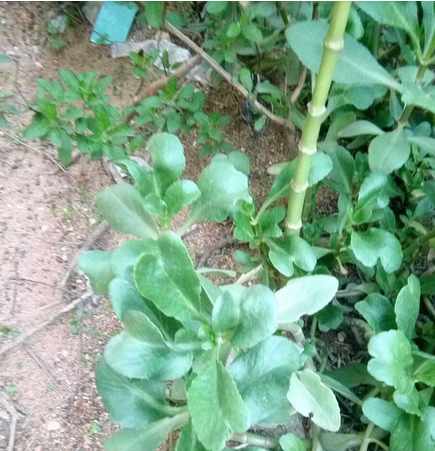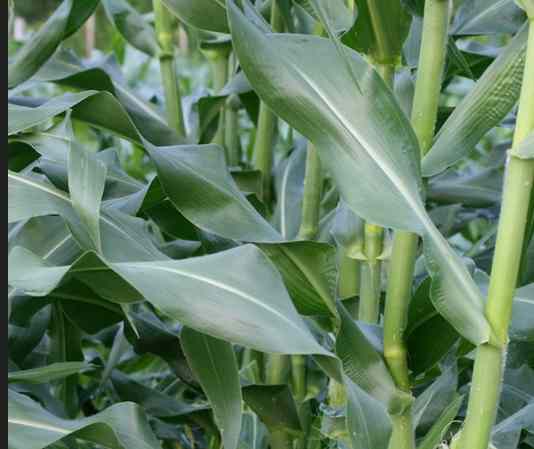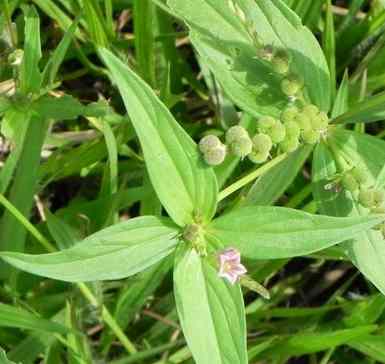
support@yorubalibrary.com
+2348073529208, 07038599574

In Yoruba land, certain plants are specially preserved, not only for their curative abilities but also for their spiritual symbolism. One of such plants is Odundun, a succulent herb commonly found in household gardens and sacred groves. Botanically referred to as Kalanchoe—most often Kalanchoe pinnata—this plant is characterized for its soothing, healing, and protective capabilities.
Odundun is known in many Yoruba homes for its quick response to wounds, burns, and inflammatory conditions. It is also tied to spiritual rituals, protection, and child care. With its thick, water-retaining leaves, Odundun survives dry seasons and still delivers potent medicinal value, making it a symbol of resilience and health.
Key Facts
Category: Leaf
Botanical Name: Kalanchoe pinnata
Common Name: Air Plant
Yoruba name: Ewe Odundun
Igbo Name: Nil
Hausa Name: Nil
Characteristics of Odundun
• Plant Type: Succulent herb or shrub with soft, fleshy leaves.
• Leaves: Oval, green, and thick with scalloped edges; capable of producing small plantlets at the edges.
• Stem: Soft and watery; can grow up to 1–2 meters tall.
• Habitat: Grows easily in pots, gardens, rocky soil, or forest edges. Requires minimal water.
Traditional Uses in Yoruba Medicine
1. Wound Healing and Burns
The fresh leaf is crushed or heated slightly and applied to open wounds, burns, or sores to aid rapid healing. Its cooling and anti-microbial effects make it ideal for emergency first-aid treatment.
2. Treatment of Inflammation and Swelling
The sap from the leaf is applied to areas of joint pain, insect bites, or body swellings. It helps reduce inflammation and relieve pain.
3. Post-natal and Baby Care
Odundun is used in herbal baths for newborns and mothers. It is believed to strengthen the baby’s bones, cleanse the skin, and provide spiritual protection.
4. Spiritual Cleansing and Protection
The plant is often used in omi-ero (spiritual baths) to remove negative energy, break spiritual bonds, and protect individuals from spiritual attacks.
5. Asthma and Respiratory Relief
Decoctions made from the leaf are taken to ease breathing, treat chest congestion, and calm the symptoms of asthma.
6. Ulcer and Internal Heat Treatment
Taken orally, the leaf juice is used to soothe stomach ulcers and neutralize internal body heat (ooru ara).
Want to treat common ailments such as Malaria, Cough, Measles, Typhoid, Pile etc naturally without spending much? Grab a copy of Authentic Herbal Solutions: 15 Common Ailments & Their Natural Cures. A practical eBook recommended for everyone regardless of tribe, religion or association. Order below or Download sample here
AUTHENTIC HERBAL SOLUTION #4KOne Yoruba proverb says "Bí olóde ò kú, òde rè kì í wu Gbégi". Do you know that Gbégi is actually a leaf/plant? Get Yoruba Proverbs on Plants and Herbs, which is a collection of Untold Wisdoms Hidden in Leaf and plants comprising their Life Applications & Moral Teachings. Order below or download sample here
YORUBA PROVERBS ON PLANTS #4KHealing Properties of Odundun
• Anti-microbial: Effective in controlling infection in wounds and skin disorders.
• Anti-inflammatory: Reduces swelling, redness, and joint pain.
• Demulcent: Soothes inflamed tissues, especially in the digestive tract.
• Astringent: Contracts skin tissue and reduces bleeding in minor wounds.
• Spiritual Detoxifier: Cleanses the aura and is used in spiritual baths and rituals.
Functions in Yoruba Traditional Medicine
• Used as a quick remedy for children’s injuries and home accidents.
• Included in herbal teas for treating cough and chest infections.
• Added to agbo inu (internal cleansing herbs) to treat stomach discomfort.
• Crushed and rubbed on swollen body parts or used in herbal plasters.
• Served as part of purification rituals for those afflicted by spiritual attacks.
Conclusion
Odundun (Kalanchoe pinnata) stands tall in Yoruba healing traditions as both a practical and mystical plant. Its thick, water-filled leaves are a reservoir of healing for wounds, inflammations, internal heat, and even spiritual pollution. Easy to grow and widely available.
Have you heard of our Yoruba Herb Dictionary? This contains names of Yoruba Leaf, Roots, Barks, Characteristics, Properties & Identification with HD Pictures. Order below or download sample here
A-Z HERBS & LEAF DICTIONARY #4K
Know more about the Yoruba traditional uses and he…

Learn about Ewe Aran, a potent Yoruba medicinal le…